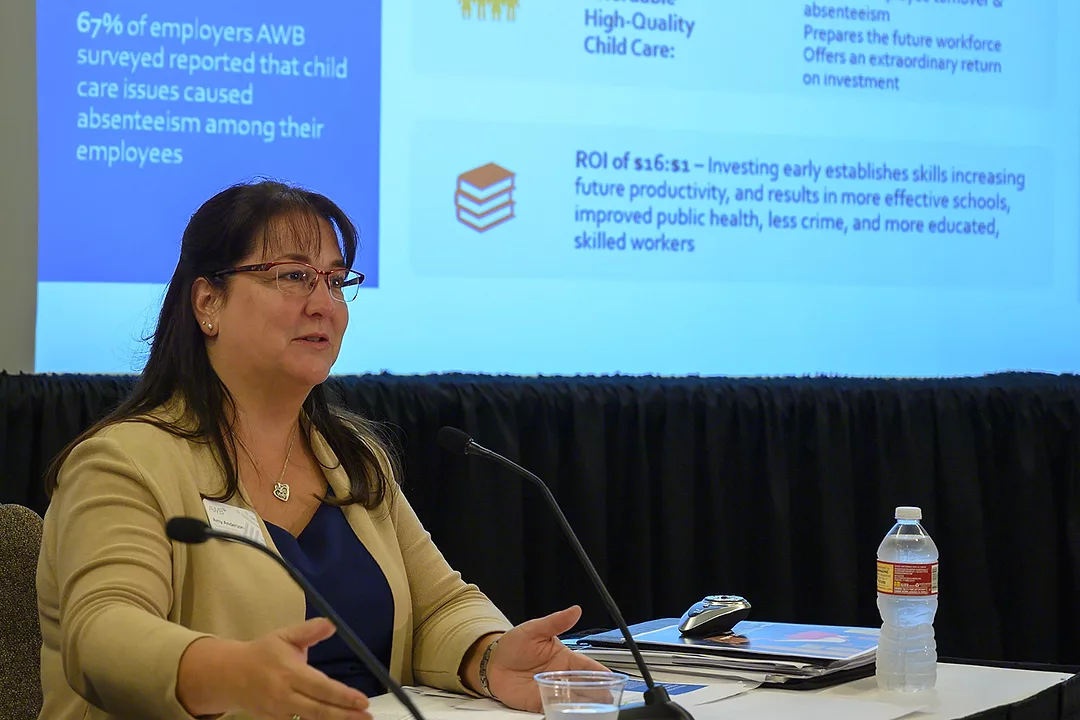
Home » Child care is critical issue for the health of families, economy
Child care is critical issue for the health of families, economy

November 14, 2019
By Kris Johnson
The lack of access to affordable, high-quality child care isn’t just a problem for families. A recently released report shows that it’s also a major issue for employers and for the overall economy.
The report, “The Mounting Costs of Child Care: Impacts of child care affordability and access to Washington’s Employers and Economy,” found that a lack of child care is costing Washington businesses more than $2 billion per year in employee turnover or missed work. The total cost to the state economy tops more than $6.5 billion per year.

It was developed through a collaboration of the state Child Care Collaborative Task Force partners, which include the Association of Washington Business Institute, Child Care Aware of Washington, Children’s Alliance, the state Department of Commerce, and the U.S. Chamber of Commerce Foundation.
Amy Anderson, government affairs director for the Association of Washington Business, serves as a member of the task force and helped lead a discussion about the report’s findings during AWB’s Policy Summit in September.
Employers don’t always realize how significant the issue of child care is for their business and for their employees, Anderson said. The fact is, people are leaving jobs, not accepting jobs and foregoing educational opportunities because they can’t find or afford child care, she said.
“It’s a workforce issue. It’s an education issue. It’s a rural issue,” Anderson said. “Most important, it’s a Washington issue. We need to educate people and make them aware.”
According to the survey, workers with children under age 6 represent 15 percent of Washington’s workforce. Nearly half of those families surveyed – 49 percent – said they found it difficult or very difficult to find, afford and keep child care.
Part of the problem is that the number of child care providers is not keeping pace with population growth. The report notes that the number of family child care providers has dropped 20 percent in five years, while the state’s population has grown more than 400,000. The capacity of licensed child care provider slots grew by just 3,000 children during that time.
When families do manage to find child care, it’s expensive. According to data from Child Care Aware of Washington, families in Washington pay more on average for an infant in a family child care program than all but two other states.
As a result, parents may transition from full-time to part-time work, decline a career or educational opportunity, quit their job or end up being fired.
The survey found that 48 percent of parents with young children reported missing days at work, school or training in the last six months due to child care disruptions, and 40 percent reported the need to arrive late and leave work early due to child care issues.
The direct cost to employers as a result of employee turnover or missed work due to child care issues is $2.08 billion per year, the report found.
Overall, the report concluded that families, employers and the state’s economy depend on the child care industry in the same way they depend on public utilities, but the industry is largely comprised of small businesses operating in a “broken market.”
Child care and early learning have well-documented value to the workforce and to society, and yet most parents cannot afford to pay for the true value of that child care, the report found.
Ultimately, the report concluded, without access to reliable, quality child care, employees and employers both suffer.
Kris Johnson is president of the Association of Washington Business, the state’s chamber of commerce and manufacturers association.
Local News
KEYWORDS november 2019





